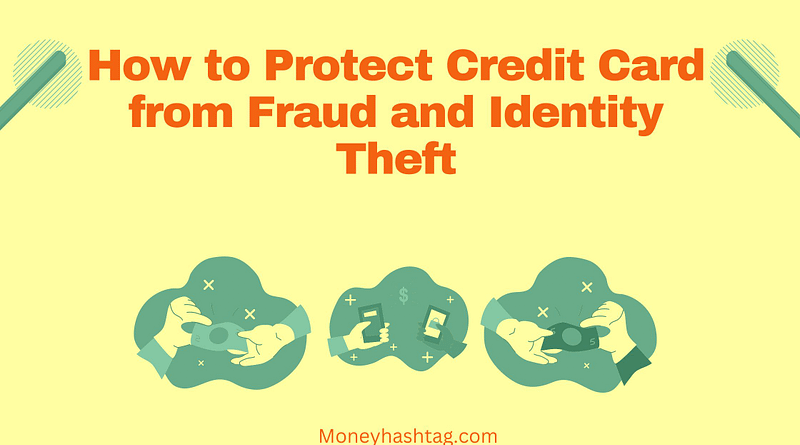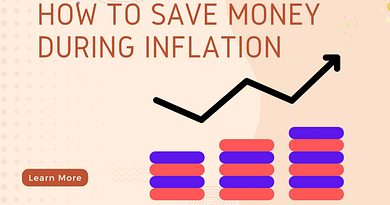How to Protect Credit Card from Fraud and Identity Theft
I am sure you are using credit card for your daily purchases and sometimes you might worry what if it get stolen or something happens that questions the safety of your credit card. With increasingly sophisticated methods employed by cybercriminals, it’s essential to arm ourselves with knowledge and proactive measures to minimize the risks associated with credit card fraud and identity theft. In this guide, we’ll explore practical strategies and best practices to fortify the security of your credit cards and shield your identity from malicious practices.
How to protect credit card from fraud and identity theft
Keep your card safe
Keeping your card safe is an essential aspect of protecting your credit card from fraud and identity theft. When not in use, store your card in a designated wallet or purse compartment, ideally with RFID protection to prevent electronic theft. Just after you are done using your card, keep them inside your wallet.
Many people write down their PIN on a note or piece of paper and keep them inside their wallet. What if your wallet get stolen, can you imagine what will happen? Memorizing your PIN is another crucial aspect of keeping your card safe.
Take advantage of online or mobile banking apps offered by your bank to review your account activity in real-time. By keeping a close eye on your transactions, you can quickly identify any suspicious or unauthorized charges and report them to your bank.
Memorize your PIN
Memorizing your Personal Identification Number (PIN) is paramount in keeping your credit card safe from unauthorized access and potential fraud. Writing down your PIN or storing it digitally increases the risk of it falling into the wrong hands. consider using mnemonic devices or repetition techniques to reinforce your PIN in your memory.
Avoid using easily guessable numbers, such as birthdates or sequential digits, as your PIN. Instead, opt for a combination of random numbers that are meaningful to you but difficult for others to discern. This simple yet essential measure contributes to the overall security of your financial transactions.
Monitor your accounts
Utilizing online banking or mobile banking apps provided by your bank allows you to monitor your accounts conveniently and in real-time. Check your account activity frequently, ideally at least once a week, to review transactions and ensure they are all legitimate. Look out for any unfamiliar charges or transactions that you didn’t authorize.
Many banks offer customizable alerts that notify you via email, text message, or push notification whenever there is a transaction on your account. These alerts can serve as early warning signs of potential fraudulent activity. When reviewing your account statements, scrutinize each transaction carefully.
Verify that the merchant names, dates, and amounts match your actual purchases. If you notice any discrepancies or suspicious transactions, contact your bank immediately to report them. Most banks have dedicated fraud departments that can assist you in investigating and resolving any fraudulent activity on your account.
Enable alerts
Enabling alerts on your credit card account is a proactive measure that adds an extra layer of security, helping you detect and prevent fraud or unauthorized activity promptly. These alerts notify you via email, text message, or push notification whenever there is suspicious or unusual activity on your account.
You can tell your bank to send you alerts when your credit card balance reaches a certain level or exceeds a predetermined threshold. This can help you stay informed about your spending habits and prevent overspending. Or, receive alerts for potentially fraudulent or suspicious activity detected on your account, such as multiple declined transactions, unusual spending patterns, or purchases from unfamiliar locations.
To enable alerts on your credit card account, log in to your online banking portal or mobile banking app and navigate to the alert settings section. From there, you can select the types of alerts you want to receive and customize the settings according to your preferences.
Use secure websites
Why secure websites? Secure websites encrypt your sensitive data during transmission, making it much more difficult for hackers to intercept and misuse your information. Before entering any personal or payment information on a website, check the URL in your browser’s address bar.
Secure websites use “HTTPS” instead of “HTTP” at the beginning of their URLs. The “S” stands for secure and indicates that the website encrypts data transmitted between your browser and the server. When making online purchases, use trusted payment methods such as credit cards or secure payment gateways like PayPal.
Credit cards offer additional fraud protection and may limit your liability for unauthorized transactions. Avoid using debit cards or direct bank transfers, as they may not offer the same level of protection. Ensure your web browser and security software are up-to-date with the latest security patches and updates.
Exercise caution when clicking on links in emails, especially those requesting personal or financial information. Phishing emails often mimic legitimate companies and try to trick you into providing sensitive data on fake websites. Always verify the authenticity of emails and websites before entering any information. That’s it.
Be cautious with your information
Only provide this information when absolutely necessary and to trusted entities, such as reputable merchants or financial institutions. Legitimate companies typically won’t ask you to provide sensitive information, if in doubt, verify the authenticity of the request by contacting the company directly using contact information from their official website.
You should always use strong, unique passwords for your online accounts, especially those associated with your credit cards, banking, and shopping accounts. Enable multi-factor authentication whenever possible to add an extra layer of security to your accounts.
You should always avoid posting sensitive information such as your full name, address, phone number, or financial details publicly. Be mindful of who can see your posts and adjust your privacy settings accordingly.
Use strong passwords
A weak password is like leaving your front door wide open for hackers to stroll right in and help themselves to your personal information. So, what exactly makes a password strong? first of all, avoid using easily guessable information such as birthdays, pet names, or simple number sequences. Instead, opt for a mix of upper and lowercase letters, numbers, and special characters.
The longer the password, the better. It’s also crucial to use different passwords for each online account you have. This way, if one account is compromised, hackers won’t be able to access all of your accounts with the same password. Consider using a password manager to securely store and manage your passwords.
Password managers generate strong, unique passwords for each of your accounts and encrypt them to protect against unauthorized access. Protecting your passwords is essential in safeguarding your financial information and maintaining control over your online security.
Report lost or stolen cards immediately
Losing your credit card or having it stolen can be a nightmare scenario. Not only does it make you vulnerable to fraud and identity theft, but it also puts your finances at risk. That’s why it is crucial to report lost or stolen cards immediately. Once you report your lost or stolen credit card, the issuer can deactivate the card to prevent any further unauthorized transactions.
This action helps minimize the potential financial impact and stops the card from being used fraudulently. your credit card issuer will typically cancel the compromised card and issue you a replacement card with a new account number. This ensures you can continue using your credit card for legitimate transactions without interruption.
The sooner you take action, the better chance you have of resolving the situation swiftly and smoothly. When reporting a lost or stolen card, be sure to provide as much information as possible about the circumstances surrounding the incident. This will help the credit card company investigate the situation more effectively and take appropriate action to secure your account.
Regularly check your credit report
Checking your credit report regularly is one of the most important steps you can take to protect yourself from fraud and identity theft. Monitoring your credit report helps you detect early warning signs of identity theft, such as unfamiliar accounts or inquiries. By catching identity theft early, you can take steps to mitigate the damage and protect yourself from further fraudulent activity.
Your credit report provides valuable insights into your financial health, including your credit utilization, payment history, and credit inquiries. Stay informed about your credit history and be proactive in addressing any red flags if you see any. This won’t impact your credit card score.




